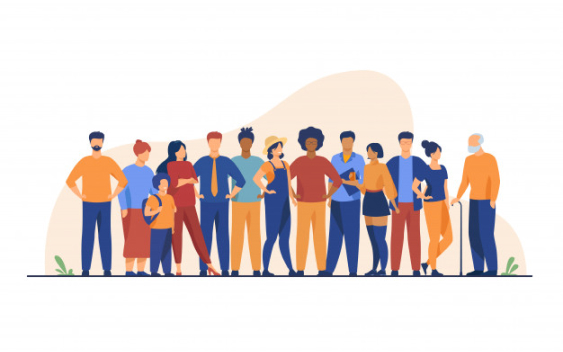Last week we had Jack Phan, a serial entrepreneur as our guest discussing the importance of building a digital footprint strategy - especially if you’re a job seeker, pivoting careers or want to build your personal brand. It’s difficult to know what types of content will resonate with others while also showing our best selves but Jack offered his social media expertise and advice on how to do it and why it matters. Here are the questions and abbreviated answers from that discussion. If you’d like to hear the full version, find the replay here.
Questions & Answers with Jack Phan
Before we dive into questions, I wanted to ask a bit about your background. You majored in computer science at a local college, you’ve held CTO roles as well as CMO roles and have been successful building companies and sold a few of them. Can you talk about how you got you here? What motivated you?
In 1997 I graduated from college and I came back to Portland from studying abroad in China. There was this new thing called the internet and I worked with a friend who was painting houses. He kept getting referrals for remodeling homes. I started out at his company as a telemarketer. One of the skillsets I have is looking at something and saying, “What’s a new way of doing something old? How can we improve what’s already there?” The innovative mind in me made me look for different avenues and different opportunities. Once I looked at what he was doing, I took it to the internet and we created a business and it became homeadvisor. And then we built another company. Over time I started building this wealth of knowledge through my experience. Once I sold my second company and became an investor, it was one of those things where I was sharing an incredible amount of knowledge for people and to me it was just something I learned and things I just did but that knowledge is transferable. The more I could share that knowledge the more people looked at me and wanted to connect with me on a deeper level. That led me to different opportunities. I’ve always been a communicator and networker. I’ve turned it into thought leadership that is valuable to people.
Why do you think it’s important to have a digital footprint strategy if you’re in the job market? What skills, competencies and experiences do you feel people should consider sharing online?
Today, everyone knows what you’re doing and how you’re projected to others is very important. You’ve heard stories about a person applying for jobs and getting rejected because of a post on Facebook or an inappropriate tweet 5 or 10 years ago. These are things that can come back to bite you. I’ve always been very conscious of sharing things personally and professionally but that connects to the audience. I like to keep things positive and that’s just my style. Because when I meet new clients and when I have an opportunity to work with new people, every opportunity I’ve landed, people look at me with respect. My digital footprint is very authentic. It’s who I am. That’s because I project a positive image. Some people use social media in different ways and use it only to complain to customer service of different companies. What you’re putting out there is viewable to the public and people need to remember that. When I am looking at working with different people, I make sure our strategies and goals are aligned. If I look at their social media, it doesn’t take much to see that we are NOT aligned. They may say something but then their digital footprint says something else. I’m careful about my digital footprint and it’s very clean but still very authentic and people recognize that and connect with me because of it.
Can you talk about some of the amazing connections you’ve been able to develop that would not have been possible if social media didn’t exist? I’m thinking about the OnceUncle story and how that all happened.
It’s been a blessing being part of #NASASocial and #AdobeInsiders but one of the most amazing experiences was a few years ago. I was watching the Apple event and saw that #Momo was trending above Apple. So I wrote “What is Momo?” and it’s a member of a K-Pop band. People kept writing and sending GIFs after I asked the question and I started engaging with the K-Pop fans directly. They could have ignored me or said, “Who is this guy?” but they paid attention to me and it was great. I checked out the band and they have a positive vibe and their fan base was really positive towards me. They told me all about K-Pop and alerted me about their digital events. During that Twitter interaction, I got another 5-10k followers on because I engaged with the fans. It’s actually been one of the most rewarding experiences of my life.
Let’s talk about the human piece. What do you recommend when people make an error and are called out on it? Should they go with the flow? Delete it?
I’ve been on social media enough and I’ve made my fair share of mistakes. Myers Leornard made anti-Semitic word and now he’s apologizing about it. Someone said, “Hate is still hate and whether or not it was a mistake, you need to learn and approach it in the right way.” I’ve shared things for fun. There’s a selfie day for TWICE and people imitate one of the band members so I’ll do that and just have fun with it. You’ll see my twitter feed is filled with furry animals. Who doesn’t enjoy puppies and kittens? Since I’m a K-pop fan, it can seem weird to outsiders. Some people attacked me and thought I was being creepy. There was a moment when I posted something but didn’t want to cause controversy. There were times when I thought I should delete posts because it was misconstrued. Other K-pop fans said, “No. Keep posting”. I’m definitely aware of the perception but it’s all in fun and it it’s wholesome. When you make mistakes, things can be turned into a positive. Mistakes happen and I’ve been told more often than not, “It is what it is and just own up to it.” That’s the reality of using social media.
What would you say are your main rules that you adhere to when engaging with others online? What are the “best practices” for managing one’s reputation online?
I try to keep things positive and upbeat. I try not to engage in things that are controversial. There are times when I am passionate about things and when there are movements and stuff is going on in the world, there are times when my voice is important to people. To me, it’s questionable because I never felt I had that much strength in what I had to say. But the more my career grew and my following grew, I realized that people expect me to have a response and really steer that conversation in a positive way. You can have tough conversations but not be judgmental. It’s part of trying to be able to connect with the audience in multiple ways. My audience is varied; left, right, Black, White, Asian. Advice I’d give is, to educate yourself and learn about things. I’m open to learn from others and it’s also important to fact check before making a comment.
Who are some of your favorite influencers online? In your mind, who is extraordinary in providing valuable content or that you feel comes across as authentic in their approach?
In my Adobe group, I have loads of influencers I follow. Goldie Chan, Lolly Daskal, Winnie Sun (Forbes Contributor to help people be more financial savvy). I like following people who share knowledge but I also love humor. Someone I follow who does that quite a bit is Rex Chapman. He’s a former basketball player and he shares fun and unique things that are happening. I recommend that people expand their following on Twitter and then follow their followers as well. People know that I like Baby Yodas, puppies and kittens and rolling pandas so they know I’m going to post things like that. When you establish trust and share things behind the scenes, people will recognize that and want to connect with you.
Would you recommend some social media over others for career and pivoting one’s career?
LinkedIn has recently changed their algorithm but it’s still the main career hub. Facebook has so many amazing groups and that is where they win. I’ve developed loads of relationships on groups within Facebook. I still love Twitter but it can be very distracting. I had to take a Twitter break because in the last year, it became too much. There’s Clubhouse and when there is a small group, it’s a great way to connect with others. I’m always looking for new ways to do old things and so I try loads of different social media and when I see results, I go deep on them. I keep my options open and I’m able to engage with many different kinds of social media.
Having over 1 million Twitter followers can attract a few trolls. How have you handled that situation and how do you recommend others do the same?
Sometimes when you hold people accountable, they back down. Some people just want to draw the ear from you and make you frustrated. You feel like you have the right to justify your post. It’s not worth it. I focus my attention on the people I want to engage with and who are positive. So now I don’t respond to the negative trolls.
More about Jack:
Jack is a visionary and serial entrepreneur from the Pacific Northwest. For over 20 years, he has been building and scaling businesses in online marketing, lead generation, affiliate marketing, advertising, news and media. Currently, Jack is the CEO of PhanZu, a media services agency for online publishers, CMO of AirDeck, an audio tool for presentations, CTO of AGEIST, a lifestyle media company, and Board Member of DollarFor, a non-profit that has helped eliminate over $4.0 million in medical debt for families. He has sold two of his companies and has helped several founders go through the process of selling their businesses as well.
Jack has over 1.2M+ followers on social media engaging in topics on leadership, entrepreneurship, he’s a space enthusiast and posts about #NASASocial, he’s also an industry leader in the #AdobeInsiders group, and living his legendary status as #ONCEUncle to the fanbase of K-pop sensation #TWICE. Read more about Jack Phan’s impressive background here.
You can find Jack on twitter @jackphan








